#it amounted to like. $600 a month with both of those
Explore tagged Tumblr posts
Note
AITA for refusing to buy peanut butter and honey for everyone when I'm already buying it for myself when I'm in charge of buying groceries?
Names: my name is Nichole 19 f, Jake 20 m, Tams mtf.
A basic run down of the situation, we all live together and we have figured out that because rent is a bit cheeper where we live and I have the most money out of all of us, Jake and Tams split the rent and I cover our groceries which to feed all three of us, is a little over the total cost rent, meaning I am spending the most money out of all us. Rent is about $600 so they are both spending only $300 dollars each.
I have two lists that everyone writes down groceries items on. One list, the priority list is for meals and the secondary list is for wants such as snacks foods. I set a budget of $800 and as long as I can cover all the priority items for the month, I will get what I can on the secondary list.
The reason why I don't buy everyone peanut butter and honey is rather petty sounding, but it is that neither of them ever add those items to either list, and I will buy small jars of both and mix them together to eat by myself because neither Jack or Tams likes the mixture and I only buy enough to last me about 10 days so I don't like to share the unmixed peanut butter and honey since it's all I'll I have of it for the month.
They don't even think about peanut butter or honey until they see my mixture in the back of fridge a day and will then team up to berate me for not getting everyone peanut butter and honey and being selfish and a bad roommate. I always tell them they didn't put it on any of the lists and this is just a treat for myself but they argue back that I should have just gotten it anyways. And this agreement has been going on for a few months now.
But the reason why I am so incessant on the lists, and why I even made them in the first place, is because I use to keep buying myself snacks and then they would ask me to buy everyone snacks and I didn't think about it until I realized I was spending pretty much all my money on food. We had a talk when I realized this, and while they grumbled about it they agreed to the budget and the lists so I wasn't stuck paying an unfair amount of my paycheck on us compared to them.
I know that maybe it's just my anxiety, but I can't help but feel like they are disrespecting this boundary I set with my money every time they insult me for not buying peanut butter and honey for everyone when if they wanted it so badly, and I even tell them this, they write it down right then and there for next months grocery trip or they could even just hand me the cash and have me go pick it up for them rather then expecting me to buy it for them when it wasn't and never is on the lists they agreed to. I also just don't understand why when I tell them to just add it to list for next month or to hand me the money to get it for them they storm off and do neither of those things, but I am rather social stunted from a rather isolated childhood so maybe this behavior has a very easy to see reason I'm just not getting
I know it sounds really petty, I really do, but I just really don't want to relent on this boundary and then for them to later use it as excuse to begin asking for more and more again until I can't afford it. But maybe I'm just being unreasonable and a petty asshole, but maybe I'm not, I honestly have no idea
What are these acronyms?
123 notes
·
View notes
Text

@strengthisyellow, I absolutely understand your frustration and of course you're right and I'll come back to why later, but first I want to use this as a jumping off point about
⭐German Vowels⭐
⭐Number of German Vowels
German has a LOT of them. Out of 564 languages surveyed by WALS, 93 had 2-4 vowels (16%), 287 had 5-6 vowels (51%) and 184 had 7-14 vowels (33%) German has 8 vowels letters (a, e, i, o, u, ä, ö, ü <- graphemes). Yet we have 16 vowel sounds (phonemes)! (not counting diphthongs here)
The number 16 comes about, because most vowel can be realized long/shortly (gespannt vs. ungespannt). Minimal pairs (two different words that only differ in exactly one sound) are a great way to show this:
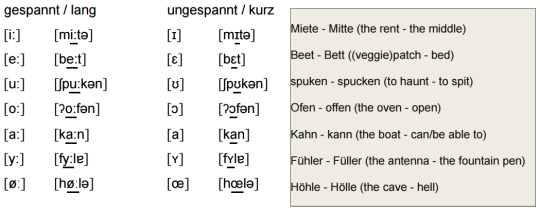
These minimal pairs can also give you an idea of how the phonologial differences are marked in the spelling!
⭐Vowel-amounts in various languages
Here's a comparison of different languages and their vowels (without diphthongs, because those are the combination of two adjacent vowel sounds).
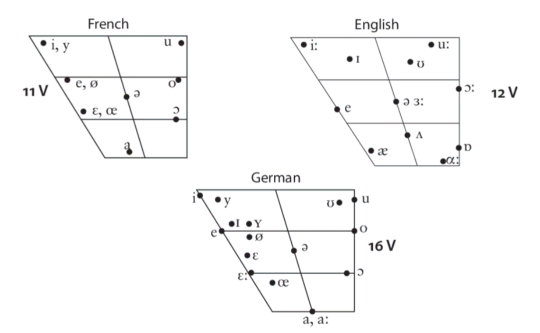
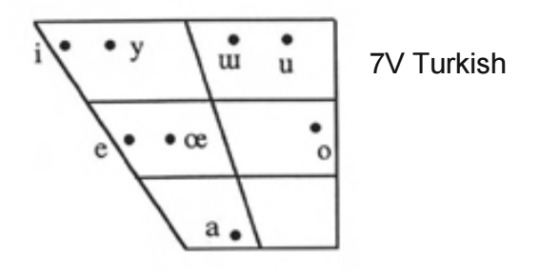

⭐L1-phoneme inventory
Now what's super interesting about learning a first language, is that shortly after birth, babies can hear and distinguish all possible sounds (across the world, there are around 600 consonant sounds and 200 vowel sounds; in sum, 800 different phones), yet at 10-12 months old, they can only distinguish those sounds present in their first language (aka their language's phonemes)! A japanese child, for example, would hear no difference betwen "radio" and "ladio", because /l/ and /r/ are not phonemes in Japanese.
I get to encounter this first hand with German-learners who struggle to produce, but most importantly even hear the difference between [ˈmʊtɐ ] (Mutter; mother) and [ˈmʏtɐ] (Mütter, mothers). (So far, I've specifically asked beginner/intermediate students with en-US and es-MX as their L1 about this - both US-English and (Mexican) Spanish do not have [ʏ] as a phoneme, so they get generalized and instead perceived as [ʊ].
Put simply, within its first year, a baby builds up a "phoneme inventory" made up of all the sounds that make a difference in its language, and loses the ability to distinguish between the ones that don't because those simply don't matter.
Good news is that you can and likely will train yourself to hear and distinguish sounds outside your current phoneme inventory (depending on your phoneme inventory and your TL's phonemes, this might be harder or easier).
⭐German Vowels and Spoonerisms
Back to the schulkrank-tags: The issue lies not as much in the letters as in the sounds, but OP continues to be right. "kühl" and "kuhl" are NOT the same, because they differ in a phoneme, which (by definition) changes the meaning of the word. What's additionally interesting, is that spoonerisms (switching of sounds or morphemes between two words of a phrase, like "blushing crow" instead of "crushing blow") are much more likely to occur if the words that come out of it are real words again! ("The Lord is a shoving leopard." (instead of "a loving shepherd") is more likely than "The shord is a loving leopard" because "shord" isn't a real word)
The US-American coworker (who probably speaks a little German if he enjoys German spoonerisms) made "schulkrank" out of "Kühlschrank". That is something a native would never do because instead of merely switching sounds, he switched and changed one, thus it's not a real spoonerism anymore. Yet to him it was probably entirely correct because he literally doesn't hear a difference.
#i love this#i'll properly cite my sources in the replies#asap#german#linguistics#vowels#langblr#lingblr#learning german#spoonerism#Language-learning linguistics are so so much fun!!!!!
22 notes
·
View notes
Note
har har hello
Actually, I have a few questions like how the hell do you clear all those event battles? Does my level really matter? Where can you get more energy and do I have to max out my cards? Which cards should I max out completely to stay strong throughout the events?
Your level doesn't actually matter, but since you're on level 81 you get a sale every level up for 99 dps so save for it! it's the easiest way to save dvs and blossoms lol.
Where can you get more energy?
I usually sometimes spam unlock N & R cards for aps, (for N demkn cards the aps are on lust cards!) sometimes higher cards have easy to unlock aps too, but be aware it isn't a permanent solution😂
You can get about 288 aps from time, 60(120 if Vip) from Beel missions, 40 from to do and 20 from surprise guests. to finish all event pages you need 744 aps. you lack about 336 aps. I usually buy one ap sale if I see I can, and leave the rest to gods 😭 - the event pages usually get enough ap.
do I have to max out my cards?
yes!! unfortunately I don't have a screenshot on hand, but a fully maxxed out card has about 10K more power than a full starred card. hardmode lesson cards are very easy to max out.
Which cards should I max out completely to stay strong throughout the events?
you need about ~ 377K (my own experiences) total power to manage to skip the last battle, but you have to play the additional three extreme battles. you don't need to use any item though, you can still get an S rank if the estimated rank is B.
okay, a bunch of l tips that helped me a lot ! you see if you go to the demon's part in To Do you can see for each 50 battles a demon plays in or each 50 surprise guests you get 50 dps. (the prizes both end at 600)
which means skip time. you don't have to do actual battles to get them, each skips count as a battle played. however the same doesn't apply to surprise guests - you have to interact with them, doesn't matter good or bad.
So try to skip as much battles as you could and do as much surprise guests as you could. you can get to do prizes, easy level up, easy money, easy intimacy, skips are the best thing ever lmao- I usually manage to level up about three cards if they have a high level (50 and up) and even most of the time my level ups cost way less (each level up costs half of the amount of exp needed so in high levels, rip grimms-)
also not to mention by this way you can easily get an intimacy level up each week if your character has a high level (My Barbatos is at 29/5 rn, and like two weeks ago he was at 27. till the end of the week I can easily get him to level 30)
plus my suggestion is skipping a few events and spending time on your cards. I started about 6 months ago and in 2 months I had enough power to fully finish events, and the older events were way harder than these. (you needed more than 400K power to skip the latest page)
don't skip this event though. after it, clean hard mode lessons daily, get those shards, get them to skill 5. focus more on hard mode lesson cards and chapter A/M cards. also, try to summon everyday on Chapter G because they give UR shards too but do NOT summon on chapter A/M. I got lucky enough to get 6 Memory URs from the events, so I suggest you also grind in LDs to get memory cards. newer LDs are kinder, but if an old card is what you want, go ahead lol! BUT don't use anything in LDs, not even ap sales.
incase a long CB happens, try to only summon in one box to get to the memory and get the UR/+ jokers.
also try to level up cards evenly, but focus on a card's skill at a time. do not level up cards that are from the same character and sin! (ex. if you have two Diavolo envies onky focus on one) if you have same sin/character cards see which one is easier to max out and focus on them more.
Easiest || chapter A or hard mode >> URs >> UR+s.
if possible do a ten summon in each new event for the UR/+ jokers to level up the skills of nightmare cards. but don't waste your dps and dvs so much though, for new nightmares or revivals may come. keep a balance.
but if you want to be unhinged like me, a barbatos simp who's main goal is max out all Barb vards regardless of sin... oh well, do it. hell yea-
( ꒪Д꒪)ノ H-Holy..
This is a lot to read. I had to reread it several times to make sure I understood and man; I'm so thankful for your help because I wasn't sure if I was doing anything right at all while playing this game. Lmao~
Thank you so much for this!
This will definitely help me get better on the game. Especially right now. I never consider maxing out my R's and N's cards to get more ap so I'll give that a try while maxing out my top cards. It will be hard but I'll do my best! ╭( ・ㅂ・)و ̑̑
My power level is at least over 333K so really need to work on that.. (T⌓T)
I already do the daily missions, the free summons, and my cards are leveled pretty evenly so that's on the clear. The only thing I'm iffy on is spending my demon points on the discount stuff. LoL! I'm so greedy that I rather spend it on nightmare summons but if that's what it takes to get the cards I want from the events. I'll definitely do it!
I actually forget about the LD so I'll look into that again once my cards get better.
(╯✧∇✧)╯ Thank you so much for these tips!! Your a life savor!!
14 notes
·
View notes
Note
you keep mentioning making money off of games like hsr but how? im dying to know
All right I'll make a proper post about this lmfao. May I present
The Invalid's Guide to Making Money Off Mobile Games
(Please note I'm using my affiliate links, so if you click through and join up I will get rewarded at no cost to you.)
The primary way that I make money is through Swagbucks. (I also use Inbox Dollars, but I tend to use Swagbucks more for different deals. They're both owned by the same parent company.) Swagbucks is a survey website, but they also offer affiliate deals with mobile games. For proof that I'm not grifting, here is my profile.

Each swagbuck (SB) is a penny, so 100 is a dollar, 1000 is 10 dollars. As you can see as of posting this, I've earned 121, 297 SB or $1,212.97 since I started in January. I play various mobile games for a few hours every day, but I took a break for about a month and a half since I was getting burned out. I cash out to Paypal usually, but you can get a bunch of different gift cards, it's nice to be able to directly get people gift cards for their birthdays through the website.
There are a ton of different offers to choose from, from various sponsors of varying levels of credibility. They'll offer to complete different checkpoints within the game for SB within a certain amount of time.
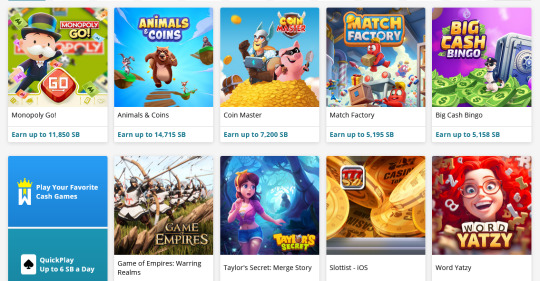
When I'm looking for an offer to start, I'm looking for a few things in particular. The amount on offer has to be worth my time. Usually, I'm looking for offers in the $40-$150 range. Anything above that is likely to have a catch, require massive amounts of in-app purchases to complete, or is downright impossible. I always consult the swagbucks reddit to check out offers beforehand, so I don't waste my time. I also consider the time investment I'm putting in. Usually 1000 levels of a puzzle game for $35 is the minimum I'm looking for. For idle games, I'm looking more in the $50 minimum range.
This is one of the offers I'm currently working on. (the game is Klondike, for $110 total offer)
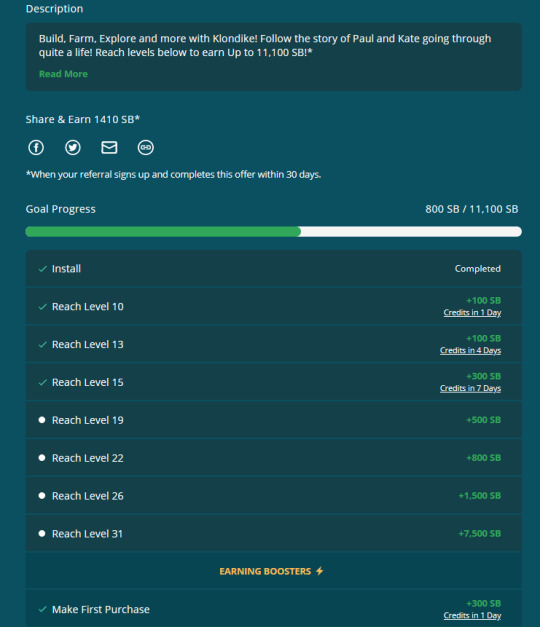
Typically with an offer in this range, I know I'm going to make a few purchases. I always try to go for stamina boosters on the cheap. I've spent about $5 so far and I'm only a week into this and already about 1/3 of the way done. I log in multiple times a day since I am, as I've stated, disabled, so I have the freedom to do so. If you do not have the ability to be so on top of things, I recommend looking at the second to last goal point, and making that your target.
Other offers are like this
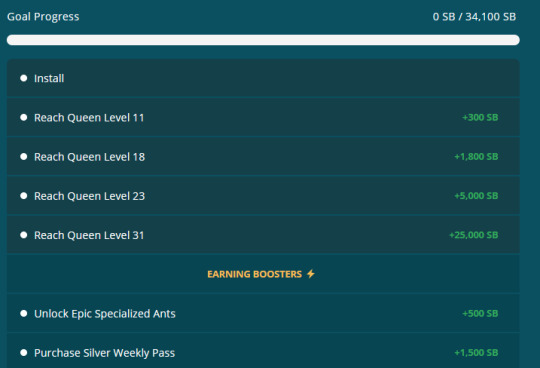
(This is Ant Legion, a game I've played before). As you can see the amount on offer is significantly higher. $340 to be exact, though keep an eye out for things like "purchase X"--typically those are 1:1 rebates, so you get a boost for free. With these types of games, you're going to be making substantially more in-app purchases. When I try this offer, I'm going to budget about $40-$50 so that I'm still making a profit of about $285. Understand that there is risk involved--if I spend that money and I *don't* make it all the way to 31 in time, I'm SOL.
Swagbucks also offers gambling games. Just stay away from those. I did one and spent about $70 to make a profit of about $150, but none of it was from the app itself. They're predatory and meant to funnel in-app purchases, though again, check the reddit. There might be a couple that are legit.
Typically with Swagbucks, I like to be doing 3 offers at a time--two idle games, and one puzzle game. I'll check my idle games throughout the day to make progress, and sit and binge the puzzle games to get to the level checkpoints (Usually about 1000 levels, which isn't as bad as it sounds.)
Before I get into the next section, this is very important, please listen to me.
If you cash out for more than the minimum threshold for taxation in your country, you will owe taxes on the money you make.
You'll need to do research for your individual situation. For USAmericans, the threshold is $600. I budget about 10% of that to go into taxes, and I have a spreadsheet with receipts for in-app purchases which qualify as business expenses in this case. Here is the SB page for more info.
Next, I've just started using Mistplay after being bombarded with ads about it. generally, I like it. I'm also not saying that it's possible to double-dip SB and Mistplay rewards, because I would not do that because it's against terms and conditions, but it might be possible (though I definitely don't recommend it).
Mistplay works differently in that it offers 'units' for playing games for a certain amount of time. I've earned about 500 units in a day playing mobile games for a few hours, and minimum cash out starts at $5 for 1800 units. Overall it's a nice system that allows me to make money on more "fun" games that I'd otherwise be playing anyway without making money, such as for instance, Honkai: Star Rail which I'm planning on starting tonight. And if you do join Mistplay, this is my recruit link ;).
Overall tips:
be prepared to watch ads. I have my shit set up on multiple devices, I have a phone and a tablet with different games on each and I usually have ads going on on one screen while I'm playing merge what the fuck ever on the other. That's how they're making the money to give to you, pussy up etc.
It does take some dedication to rack up big numbers. I consider myself on a fairly relaxed grind and usually play mobile games for about four hours a day. You can try out your limits and whatnot
RESEARCH. you can download a game and test it outside of the SB tracking to try it out, or check out the subreddit. Mucho helpful information.
IF YOU DO AN OFFER and it DOES NOT TRACK CORRECTLY do not panic. Complete the offer to the best of your ability, take screenshots, and use the SB help center to request your missing SB credit. They usually get back to me within a business day with my shit in pending.
It's a slow crawl to victory. You'll be like "i am not making fucking ANYTHING." and then the next week you'll be like. pending for $100. Be patient.
Check out the other shit on the SB and Inbox Dollars websites. I occasionally do surveys for over a dollar (though I use Forthright for surveys because overall it pays better for my time.)
Good luck gamers!
And. Please don't like. blow me up about this being a scam or whatever? I see people press x to doubt but the proof is in my bank account. Or well. My medical provider's bank account now because I've been using the money to slowly pay off bills.
17 notes
·
View notes
Text
The Hebrew Calendar
(Because I'm being stupid)
It is well known among Jewish circles that our calendar is lunisolar, meaning it adjusts to both Lunar months and Solar years. What is less well known about that is the exact numbers related, apparently. To be fair, a large part of the calculation is complicated to a frustrating degree, especially since all the sources I could find use a geocentric astronomical model that was popular 900 years ago. So I'll keep away from that as much as possible.
The length of a Lunar month - the amount of time it takes the moon to go through a complete waxing and waning cycle - is traditionally 29 days, 12 hours and 793/1080 of an hour - a little over 29.5 days, which is why about half the months in an average Hebrew year are full (30 days) and the other half are lesser (29 days). Since synchronization of weekdays is also important, we'll note that there are 1.5 + 793/(1080*12) excess days in a month. Remember that.
Now, the length of a Solar year is about 365.25 days. Only it's not, because it's more like 365.2422. This is what made Pope Gregory skip four days and rearrange the whole system - but we Jews weren't lucky enough to have someone notice. I mean, the Talmud does have two different estimations IIRC, and one of them is slightly more accurate, but it changes very little. So, if we believe the calculations presented to us, you'll find that 19 Lunar years of 12 months each, with seven years that have an additional month, add up to about 19 Solar years. Due to how this math works, I'm going to calculate it separately for days, hours, and Ḥalakim (one in 1080 in an hour, about 3.33 seconds). The number of months is in the end 235 (19 times 12 plus 7), so:
793*235=186355. To add what's left to the hours: 186355/1080=172(595). I have used a calculator for this and I'm not ashamed because those are large numbers to work with. So, 595 Ḥalakim, with 172 hours to add to the next level.
12*235+172=6*470+172=2400+420+172=2992 hours. To add to the days what's added: 2992/24=124 (16). So, 16 hours, with 124 additional days.
29*235+124=20*200+20*30+20*5+9*200+9*30+9*5+124=4000+600+100+1800+270+45+124=6815+124=6939 days. No more questions. Our numbers are, then: 6939 days, 16 hours and 595 Ḥalakim.
Now to the other side: according to Google, a Solar year is 365 days, 5 hours, 48 minutes and 46 seconds. To convert the minutes and seconds to Ḥalakim: there are 18 Ḥalakim in a minute, so 48*18=6*8*6*3=3*2*3*2*2*2*2*3=3^3*2^5=6^3*2^2=216*4=864. In addition to that, one Ḥelek is three and a third seconds, meaning there are almost 14 in 46 seconds. Making it all 878 Ḥalakim. So:
878*19=800*10+800*9+70*10+70*9+8*10+8*9=8000+7200+700+630+80+72=15900+782=16682 Ḥalakim. To find how many additional hours: 16682/1080=15(482). So, 482 Ḥalakim, with 15 hours to add.
5*19+15=110, pretty straightforward. To find the excess days: 110/24=4(14). So, we have 14 hours, and four days for the next calculation, which is:
365*19+4=3000+2700+600+540+50+45+4=6890+49=6939 days. So, 19 Solar years are 6939 days, 14 hours and 482 Ḥalakim.
As you can see, it's the exact same amount of days, which basically serves our purpose! There are 2 hours and 113 excess Ḥalakim in favour of the lunar months. If you want it in minutes, it's about 6 minutes and 16/17 seconds. All in all, not too large. But. Every 12 cycles, the difference gets larger than a day. 12 cycles are 228 years, so it's a while, but by now it's been 1700 years since the calendar was based on calculations instead of witnesses. So by now, the difference is about 7 days. Only... Not necessarily. Because the Hebrew calendar also has to account with the days of the week, which is where our previous point about the one day excess becomes relevant. Kind of.
Look, all of that - most everything mentioned here - comes from Hilchot Kiddush HaḤodesh by Rambam. And he gets much more into the math, which I don't have the energy to do now, and he has a whole awful lot of calculations on how you decide when Rosh Ḥodesh needs to be according to the math and when Rosh HaShana or Pesaḥ will fall in the week etcetera. Due to this kind of thing, the amount of days in Ḥeshvan and Kislev aren't consistent between the same year inside a 19-years-cycle, and thus some of them are shorter and cover said difference. Maybe. Maybe some are longer and create an even worse difference. But our calendar wasn't built around the accurate calculations, it was built on the 0.25 assumption that the Julian calendar was built for. Which is another reason why we might be out of sync with the Gregorian calendar in the long run. In the short run, due to 19 not being divisible by 4, the leap day can disturb things. So while in theory every 19 years the calendar resets and all the Hebrew Calendar days are the same in the Gregorian calendar as they were 19 years ago, in practice leap days can get them out of sync.
If for some reason you want to calculate the next average moon renewal, you should know that the first one was during the Hebrew year 0, at monday, 5 hours and 204 Ḥalakim. This is for the first ever month of Tishrey, currently considered the first month of the Hebrew Calendar year. We are now in the middle of the 5th month, year 5785 from this particular day. The rest is multiplication and addition based on numbers already mentioned here. Have fun!
(Tagging @alyssumlovesthecosmere, because you seem to have an interest in this type of thing.)
#jumblr#judaism#Hebrew calendar#Lunisolar calendar#Hilchot kiddush haḥodesh#I had a point about how a living calendar would not have the sync problem#By which i mean: if the calendar would still have been witness based#And ’Ibur Shana was for the beit din to decide and not precalculated#The accounting for the slide would've been easier#But it would result in a host of other problems#There's also something to be said about measuring time through perceivable means vs using set units#Judaism is built on perceived times#But we use calculations for them in the modern day#Maybe I'll make a separate post about that#long post#Calendar math
6 notes
·
View notes
Note
This is Hotarubi/Sho anon or whatever you'd like to call me lol.
Just saw the ask on advice on how to play tdb, one major thing I'd like to specify is - you need to save up to 30k gems at least. This is because of how the wishing well works, you can put that much amount of gems in to get some extra back for free. Apparently by a Redditor who's played Zigza's other game Evertale, they have a similar thing over there that occurs like twice a month? If we're lucky, tdb also gets it and its pretty much the best way for an f2p to keep accruing gems.
So if you've been spending gems willy-nilly without any ssrs (units, not warding cards bc those are useless without someone to match it with) and you're not too attached to your account, then your best bet is to just make a new account and hopefully save up till the next wishing well (new accounts get to use the beginner wishing well for a week too which was 60->600->12000 iirc?). If possible I'd also suggest picking Zenji or Haru as your starter bc they're both tanks and levelling a tank never goes to waste bc at least they can make your SSR survive longer when you eventually get one. That said, nothing wrong with going with your fave if that's what you'd enjoy more.
I say all this but the moment SSR Sho got a rate up, my Sho alt just folded lol. His SSR card came home early surprisingly, but his warding card squeezed my gems out of me. Now I'm down to 8k gems and probably will regret it once limiteds start rolling out (the google play game page shows casual(?) wear Tohma, butler Rui, warden(?) Leo, Taiga on a throne and even Ed....)
I'm just praying I've saved up enough gems before Sho gets a limited card. I'm at least grateful that unlike Obey me, we're allowed to use alts of the same boy in a team. I'm gonna collect an army of Shos to conquer the game.
!!!
wasn't too sure if you were the same or different people but yes this is a thing you can do and very smart too! I have just been muscling my way through everything with 0 thought in my head and it's gotten me to case 59 so far.
o7 an army of shos... that is the dream. If a certain someone c: hadn't c: spooked me c:
15 notes
·
View notes
Text
every book i read in september!
this has been a very weird and depressing month for me, but at least i got a lot of reading done 🙃 a few v long books and some others i raced through, let's get into it!
The Last Devil to Die by Richard Osman
I had just started The Silk Roads (more on that later) at the end of last month when I got covid, and decided to switch to something a bit easier. Luckily I had this on hand, and it was absolutely perfect. I love this series so much, and I think this may have been the best one yet. Very good!
The Silk Roads by Peter Frankopan
My first foray into reading history for fun, one year post-history degree, and boy was this a bad place to start. I don't have a problem with the book overall, I just don't think it was right for me. I'm used to very focused studies of one particular historical period, so I found the broad-ness of this quite disappointing; it covers essentially all of human history in around 600 pages, so naturally can't go into great detail about any part of it. I found myself slightly bored and not learning anything new about periods I was already knowledgeable about, and being left wanting to learn much more about periods I wasn't already knowledgeable about. Again, this is definitely a problem with me rather than with the book - when I dip my toes into history again, I'm for sure going to go for something very specialised rather than something broad.
Slow Horses by Mick Herron
My parents love this series and we've been watching the tv show together since it started, and the book does not disappoint! It's about a group of, essentially, reject spies, who accidentally find themselves at the centre of a terrorist plot. I did find myself imagining the characters only in the way they're portrayed in the show, but that didn't impact my enjoyment (also I could not remember the plot at all, which helped).
Penance by Eliza Clark
This book has been sitting on my shelf for over a year, and I finally got around to it. It was good but, for me, didn't live up to the huge amount of hype. It's a faux-true crime story, using the conventions of true crime writing to tell a fictional story and criticise the genre. As someone who enjoys true crime but also thinks critically about it, I've read a few of these kinds of novels, and to be honest this one is not the best (I would recommend Devil House by John Darnielle or The Curious Case of the Alperton Angels by Janice Hallett, for anyone who's interested).
I was actually really enjoying it until the ending, which seemed tacked-on and didn't really make sense with the rest of the book. It kind of felt like a random plot twist just added to make the book seem more edgy, without actually saying anything more than ''sometimes journalists twist the truth''. It also didn't feel like it mattered very much, since the reader knows the entire story is made up. Kinda disappointed, especially since I know people who really love this book.
Complicity by Iain Banks
This was fantastic! It follows a journalist who is investigating a series of grisly murders and unexpectedly becomes the prime suspect. Much more gruesome than I expected, and even though I figured out who the killer was fairly early on, it still kept me hooked. I loved the use of flashbacks and multiple perspectives, both of which made it much more tense and exciting. Would highly recommend!
The Examiner by Janice Hallett
Hallett is one of those authors whose books I will literally take a detour and immediately buy if I see a new one in shop windows. All of her novels are stand-alone crime novels with quite different subjects, but they're all told through documents, like emails, text messages, call logs, etc. They're basically the book equivalent of found footage, and it works SO well. This one is set in a university, focusing on a small class of postgrads and the mystery surrounding their final project. In addition to things like text messages and emails, the book includes sections of the students' essays and marking feedback to tell the story. It has one fantastic twist, and it definitely one of my favourite of her books yet!
The Castle by Franz Kafka
I really wanted to love this, but it turned out to be one of the most difficult books I've ever read. The prose is impenetrable; trying to read this book feels like wading through quicksand. Every few minutes I would be flicking through to see how many pages I had left, which is very uncommon for me. I feel the need to clarify that I'm a very strong reader, and usually enjoy difficult novels, but this one didn't feel rewarding enough to make up for the complexity. The narrative is unsatisfying and feels completely pointless; I understand that that basically is the point, but I didn't feel compelled by it. Unfortunately this was not for me at all.
Currently Reading + On My Radar
I am currently reading The Night Manager by John le Carré; it's very good so far, and the perfect antidote to a slow-moving, plot-less book hangover. Since next month is October, I'm planning to read some spooky things. I have some horror novels on my tbr, like Sheep's Clothing by Celia Dale and Rouge by Mona Awad, as well as Oryx and Crake by Margaret Atwood, which I'm reliably informed is horrifying. Looking forward to it!
2 notes
·
View notes
Text
Nose Filler Prices in Canada: How Much Should You Budget?

Thinking about enhancing your nose without going under the knife? You're not alone. Non-surgical rhinoplasty, also known as nose fillers, is one of the fastest-growing cosmetic procedures in Canada. With minimal downtime, immediate results, and a more affordable price tag than traditional surgery, it’s no wonder this treatment is in high demand.
But before you book your appointment, one question stands out: How much should you budget for nose fillers in Canada? The answer isn’t always straightforward, as costs can vary depending on several factors like clinic reputation, filler type, and even where you live.
In this guide, we'll break down the average nose filler prices in Canada, explain what influences the cost, and help you budget smartly for your aesthetic goals.
What Are Nose Fillers? A Quick Overview
Nose fillers are dermal injections made with hyaluronic acid-based substances like Juvederm or Restylane. These fillers are used to:
Smooth out bumps on the bridge of the nose
Lift a drooping nasal tip
Create a more symmetrical profile
Add volume or shape to specific areas
The results are temporary (usually lasting 9 to 18 months) and completely reversible.
Average Nose Filler Prices in Canada
So, what can you expect to pay?
The typical cost of nose fillers in Canada ranges from $600 to $1,500 per session.
This price usually includes:
Initial consultation
Cost of the filler (usually charged per syringe)
Professional injection by a trained medical provider
Here’s a regional breakdown to give you an idea:
Major Cities
Toronto: $750 – $1,500
Vancouver: $700 – $1,400
Montreal: $650 – $1,300
Calgary & Edmonton: $600 – $1,200
Smaller towns and cities: $500 – $1,000
Tip: Always confirm if your quote includes taxes, consultation fees, and follow-up visits.
What Influences Nose Filler Costs in Canada?
Several factors can affect the total price of your nose filler treatment. Here's what you need to consider:
1. Clinic Reputation and Expertise
Highly-rated clinics and board-certified injectors usually charge more. You're paying for skill, safety, and aesthetic precision.
2. Type and Brand of Filler Used
Premium brands like Juvederm Voluma or Restylane Lyft may cost more due to their longer-lasting results and smoother texture.
3. Amount of Product Needed
Most patients need 0.5 to 1 syringe for subtle enhancement. However, a more dramatic reshaping might require 1.5 syringes or more.
4. Clinic Location
Urban clinics often have higher overhead costs than those in rural areas, which can affect pricing.
5. Inclusions in the Price
Some clinics bundle post-treatment checkups and touch-ups, while others charge separately.
6. Experience of the Injector
Experienced medical injectors might charge more per session, but the risk of side effects or subpar results is typically lower.
Is Nose Filler Worth the Cost?
Here’s why many Canadians feel it is:
Non-permanent: Perfect for those who want to test the waters before committing to surgery.
Quick results: You’ll often see changes right after the session.
No downtime: Most people go back to work the same day.
Customizable: Adjustments can be made at follow-up appointments.
Still, it’s a personal decision. Consider both the cost and your aesthetic goals before diving in.
Budgeting Tips for Nose Filler Treatments in Canada
Want to achieve your dream look without breaking the bank? These tips can help:
1. Do Your Research
Look for clinics that have strong reviews, qualified staff, and clear pricing. Don't settle for the cheapest option—safety first.
2. Ask About Payment Plans
Many clinics offer interest-free installment options. It never hurts to ask.
3. Start With a Consultation
Some clinics offer free or low-cost consultations where you can get a custom quote and understand your needs.
4. Watch for Specials
Follow clinics on social media or sign up for their newsletters to catch seasonal deals or limited-time promotions.
5. Consider a Loyalty Program
If you plan to return for future treatments (like lip fillers or Botox), ask if the clinic offers discounts for repeat clients.
How Often Will You Need Nose Fillers?
Most nose filler results last 12 to 18 months, though this can vary. Factors include:
Your metabolism
The type of filler used
How much product was injected
To maintain your look, plan for a touch-up once a year. Budgeting accordingly helps avoid surprises.
Are There Any Hidden Costs?
Sometimes, yes. Be sure to clarify:
Whether consultations are included
If follow-up visits are complimentary
If additional filler amounts will incur extra charges
Whether a dissolving agent (in case you change your mind) is part of the package
Transparency is key. Ask for a full cost breakdown before committing.
Potential Risks and Safety Tips
Even though it's non-surgical, nose fillers still carry risks. Be aware of:
Swelling and bruising (temporary)
Asymmetry or uneven results
Rare complications like vascular occlusion
Safety Tips:
Always choose a licensed, experienced injector
Avoid blood thinners before your appointment
Follow all aftercare instructions carefully
Additional resources
Nose Fillers: 5 Popular Misconceptions Explained by Experts
Can Dermal Fillers Straighten a Crooked Nose? Here’s What Experts Say
Top 5 Advantages of Non-Surgical Nose Fillers You Should Know
FAQ: Nose Fillers in Canada
1. Are nose fillers painful?
You might feel mild discomfort, but most clinics use numbing cream or lidocaine-infused fillers to ease pain.
2. Can I go back to work after my appointment?
Yes, most people resume normal activities the same day, though some bruising may occur.
3. What if I don’t like the results?
Hyaluronic acid fillers are dissolvable using hyaluronidase, an enzyme that breaks down the filler safely.
4. Are nose fillers permanent?
No. They typically last 9 to 18 months, depending on the filler type and your metabolism.
5. Can men get nose fillers too?
Absolutely. Nose fillers are popular among both men and women looking to enhance their profiles.
Conclusion: Invest in Confidence
When it comes to enhancing your appearance, nose fillers offer a safe, effective, and non-invasive option—but knowing what to expect in terms of pricing is crucial.
In Canada, you can expect to pay between $600 to $1,500 per session, depending on several factors like location, filler brand, and the injector's expertise. By doing your homework, asking the right questions, and budgeting smartly, you can enjoy beautiful, natural-looking results without financial stress.
Dr. Alireza Hashemnejad, a 1998 graduate of Tehran University of Medical Sciences, brings more than 25 years of experience in medical and aesthetic care. Now practicing in Toronto, Canada, he offers expert consultations at three leading clinics, delivering personalized treatments tailored to help each patient achieve their health and beauty goals with precision and heartfelt dedication.
0 notes
Text
Ruhr-University Bochum Ranking 2025: Admission, Courses & Fees

Ruhr-University Bochum Ranking 2025: along with essential details on admission, courses, and fees. Ruhr-Universität Bochum (RUB) emerged as the inaugural public university established in Germany following World War II in the year 1962. Currently, RUB stands as one of the most vibrant universities in Europe, hosting a dynamic campus that draws over 43,000 students globally. Annually, the institution sees more than 5,500 students and nearly 600 individuals completing their PhDs. RUB presents an extensive variety of academic disciplines and boasts a top-notch research infrastructure. With 20 faculties and 35 areas of study, it offers numerous opportunities for both research and education. The RUB Research School serves as the main hub on campus for doctoral candidates. This school facilitates enhanced qualifications, ensuring an effective transition into employment and providing guidance for those beginning or planning to pursue a doctorate at RUB. Early-stage researchers are prioritized as they represent the crucial resource for future discoveries and exceptional research efforts.
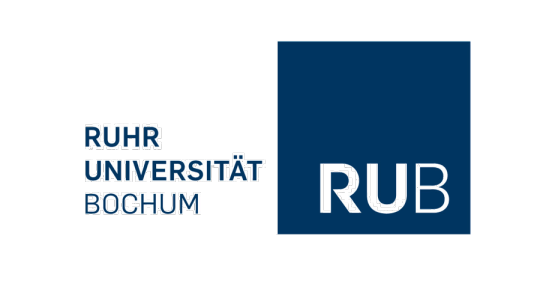
Ruhr-Universität Bochum is recognized globally for its robust research capabilities in solvation science (designated as a Cluster of Excellence) and cybersecurity (also a Cluster of Excellence), along with notable research initiatives in religious studies, materials science, neuroscience, plasma research, protein studies, and subsurface modeling and engineering. Researchers affiliated with RUB attract a considerable amount of external funding each year, significantly benefiting the university's financial resources. The university is situated primarily in Bochum, located within Germany's Ruhr Valley, while maintaining international connections in cities like New York, Moscow, and Rio de Janeiro. The campus fosters a collaborative environment where researchers at varying career stages interact, making RUB an inviting and progressive setting for academic pursuits.
UA-Ruhr: The Powerhouse of the Region
The UA-Ruhr is a collaborative alliance formed by Ruhr-Universität Bochum, TU Dortmund University, and the University of Duisburg-Essen, representing three scholarly leaders within the flourishing Ruhr Valley of Germany. Each institution is committed to dismantling disciplinary barriers. We value cooperative efforts across all academic and research areas, which is a key factor that motivated the establishment of this distinctive university alliance. By uniting our expertise in science, engineering, social sciences, and humanities, we cultivate exceptional prospects for global academic collaboration. The Ruhr University Bochum (RUB) benefits from the variety and closeness of its scientific and engineering fields located on a unified campus. This vibrant environment allows students and researchers to collaborate beyond conventional limits of academic disciplines and departments. About Ruhr-University Bochum The Ruhr-University Bochum is a publicly funded institution of higher learning located in Bochum, Germany, which opened its doors to its initial group of students in 1962. It consists of various departments and colleges located throughout a single campus, known as the Ruhr-University Bochum Campus.
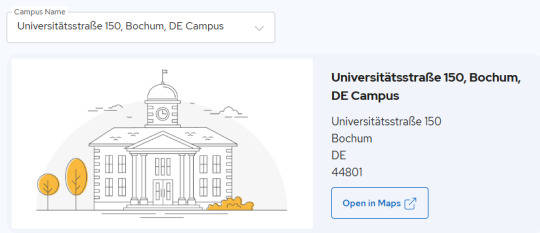
Within its selection of courses, the university provides 12 options divided into 4 main areas, with Information Technology and Software, Engineering, Science, and the Humanities and Social Sciences being the most sought-after fields. Students can choose to focus on 7 different specializations, including key areas such as Materials Science, Mechanical Engineering, Molecular Biology, Biochemistry, and Physics.

Ruhr-University Bochum delivers these academic programs at the graduate level, where Master of Science and Master of Arts degrees are among the most favored options for those pursuing postgraduate education. Typically, these postgraduate programs last around 18 months. When considering enrollment at Ruhr-University Bochum, tuition expenses play a crucial role. The tuition cost for the first year of graduate courses is set at EUR 18,000. The university gives preference to candidates who demonstrate a strong academic history; hence, incoming students must meet the entry criteria to enhance their admission prospects. The institution recognizes scores from exams such as IELTS and TOEFL as acceptable for entry. Additionally, applicants must also present a set of documents for verification, including a CV. Ruhr-University Bochum courses The course offerings at Ruhr-University Bochum feature approximately twelve classes that can be taken across four different disciplines at the graduate level. Notable disciplines include: Information Technology and Software, Engineering, Science, and the Humanities and Social Sciences. In terms of specializations, key areas include Materials Science, Mechanical Engineering, Molecular Biology, Biochemistry, and Physics, which are particularly significant in today's industrial environment. Among all the graduate programs provided by the university, the Master's of Science and Master's of Arts are the most well-known. The typical length of graduate programs is roughly 18 months.
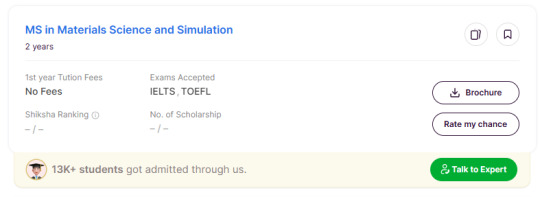
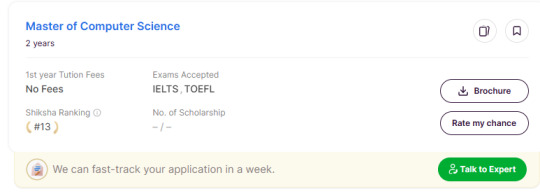
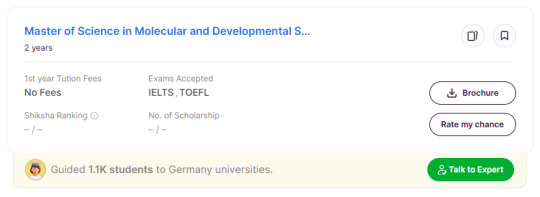
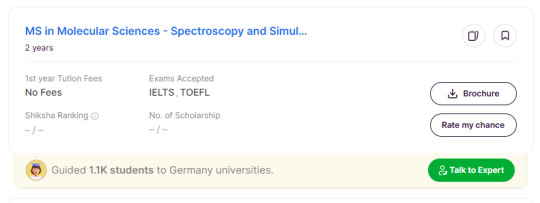
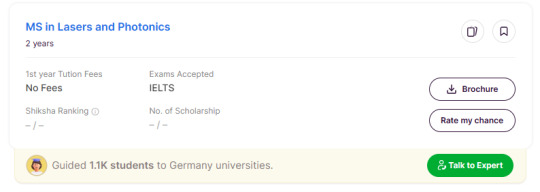


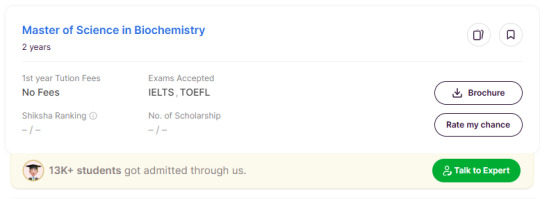
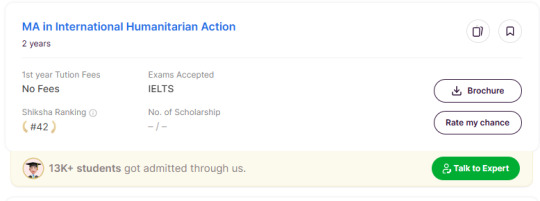
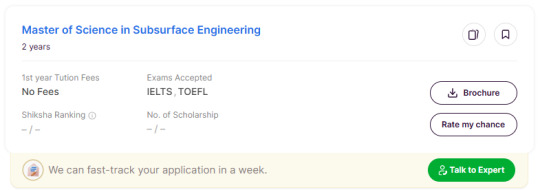
Ruhr-University Bochum Admission 2025 Ruhr-University Bochum allows students from abroad to apply via the Official Application Portal found on the institution’s official site. To gain admission, every international applicant must fulfill the entry criteria set by Ruhr-University Bochum. This includes providing academic records, achieving specific GPA thresholds, submitting results from standardized tests, including essays, resumes, statements of purpose, letters of recommendation, and additional required documents like CVs. Furthermore, applicants are also required to present their scores from English language proficiency assessments, such as the IELTS and TOEFL exams.
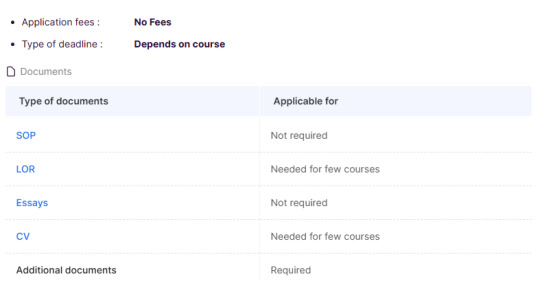
Ruhr-University Bochum Fees The costs for international students at Ruhr-University Bochum differ depending on the specific university. For postgraduate studies, the yearly fee is set at EUR 18,000. Additional expenses for international students may consist of housing, textbooks, materials, meals, and more.

Ruhr University Bochum (RUB) typically does not impose tuition fees for the majority of its degree offerings. Nonetheless, students must pay a semester fee, which is roughly €350 each semester. This payment goes towards administrative expenses, contributions to the student union, and a semester ticket for public transport in the Ruhr region. Fee Breakdown: - Semester Fee: Approximately €350 for each semester. - Tuition Costs: Usually, there are no tuition fees for most courses. - Living Expenses: Students should also plan for living costs such as rent, meals, and personal expenses, which are estimated to be about €850 per month. Semester Ticket: The semester fee includes a ticket that enables students to use public transportation throughout the Ruhr region. Additional Information: - Although the majority of programs do not require tuition fees, specific exceptions may apply, so it is essential to check the details of individual programs. - Students who do not register by the deadline might incur a late fee of €10. - Those who do not pay the semester fee on time may face penalties, including being removed from enrollment.
Ruhr-University Bochum Ranking 2025
Ruhr-University Bochum is considered to be one of the top universities in Germany. According to Shiksha Popularity Ranking, Ruhr-University Bochum ranking stands at 2020 in 2025, at national level. Apart from this, the university is also ranked by QS 2025 at #396 for World University Ranking category. The university ranking for QS at World University Ranking level for 2024 was #375. This shows that the university's position has witnessed a declined trend this year. US News and World Report also ranks the university among the top names. In 2024, Ruhr-University Bochum ranking stood at #389 for Global Universities category, showcasing a declined trend when compared to the last year. Moreover, a few of the Ruhr-University Bochum courses are also ranked by Shiksha Popularity Ranking. Below are the course rankings:


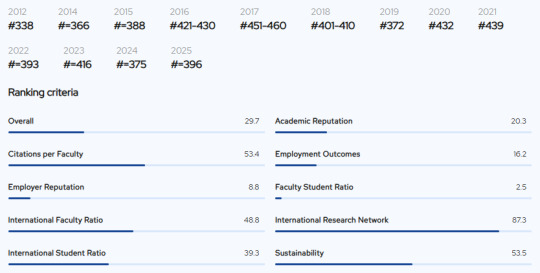

Application Process at Ruhr University Bochum The application procedure for Ruhr University Bochum (RUB) includes registering online, applying, uploading necessary documents, and possibly attending an interview or taking an entrance exam based on the selected program. Applicants must first sign up on the RUB application portal, carefully complete the online application form, and submit all needed documents by the given deadline. Here’s a detailed outline: 1.Online Application Portal: * Create an account and register on the RUB application portal. * Fill in the online application form with precise personal and educational information. * Submit all required documents electronically by the application deadline. 2.Required Documents: * Typically, you will need your passport, residence permit (if necessary), school diploma, certificate of your academic degree, and a transcript showing subjects and grades. * International applicants often require official translations of documents in German or English. * You might also need a passport-sized photo, a motivation letter, and possibly proof of German language skills (such as TestDaF, DSH, or Goethe-Zertifikat). 3.Application Deadlines: * Application windows generally open in June/July for the winter semester and December/January for the summer semester. * Deadlines may differ based on whether you are a domestic/EU or international applicant. * Verify the specific deadlines for your selected degree program in the Degree Programs portal. 4. Important Notes: * Some programs could have distinct application procedures or ask for extra documents. * Review the particular requirements for your chosen program on the Degree Programs portal. * For any specific inquiries or issues, reach out to the admissions hotline or the Admissions Office. * Make sure to check your email regularly (including the spam folder) for any updates regarding your application status. 5.Enrollment: * Once you receive an admission offer, you will need to enroll through the online enrollment portal. * This process includes providing your information and uploading the necessary documents. * To sum up, the application procedure at RUB requires online registration, document submission, and possible interviews or entrance exams. Always check the precise requirements of your selected program and the official RUB website for the most reliable and current information. Eligibility at Ruhr University Bochum To qualify for a degree program at Ruhr University Bochum (RUB), individuals typically must possess an approved higher education entrance qualification, which the Admissions Office confirms. This qualification can be a school leaving certificate or evidence of a completed or initiated degree program. International candidates might face different criteria, including language skills and the acknowledgment of overseas qualifications. General Requirements: University Entrance Qualification: A qualified higher education entrance qualification, either general or subject-specific, is necessary. The general qualification permits enrollment in all universities and universities of applied sciences, while the subject-specific qualification restricts study to designated areas. Proof of Qualification: Candidates must supply evidence of their higher education entrance qualification, which is commonly validated by the Admissions Office. Language Proficiency: Depending on the degree pursued, applicants might need to show their ability in German and/or English. Specific Program Requirements: Certain programs may impose additional criteria, such as knowledge in particular subjects or the completion of entrance examinations. Online Application: Candidates must create an account and submit their applications via the university's online portal. Non-EU Citizens: Individuals from outside the EU may encounter extra application processes, including online application for unrestricted subjects and potential assessment tests. Doctoral Programs: For doctoral studies, it is generally necessary to have a Master's degree or its equivalent along with a supervisor. International Students: Students from abroad should verify the recognition of their foreign credentials using tools like the DAAD website or anabin. They may also need to submit officially certified translations of their documentation. Language criteria might apply, and proficiency tests could be mandated. Some programs may require evidence of specific abilities and knowledge even before commencing studies. Specific Examples: For the Master's program in Materials Science and Simulation, certain academic qualifications in materials science, solid-state physics, and mathematics are essential. The EELP program necessitates an essay for aptitude evaluation and a motivation letter. Prospective students in Computational Engineering must have a background in mathematics and mechanics. Important Notes: The university can establish specific deadlines for submission, which are available on its website. The examination regulations of the university might specify further prerequisites for particular programs. Candidates are advised to thoroughly check the requirements for their selected program and reach out to the relevant admissions office or academic advisory service for any inquiries. Ruhr University Bochum (RUB) presents an energetic campus atmosphere that prioritizes the well-being of students and offers a diverse array of extracurricular options. In addition to their studies, learners can participate in numerous sports, cultural, and artistic events, alongside accessing services such as counseling and legal assistance. The institution also offers accommodation and is positioned in a dynamic urban locale with various recreational sites nearby. Campus life of Ruhr universität Bochum Variety of Extracurricular Opportunities: RUB features an extensive program for arts and culture, which includes the university’s dedicated arts facility, the Musisches Zentrum, and a range of performances and musical events. The university sports department provides more than 90 sports activities, spanning from fitness sessions to competitive events. Emphasis on Student Health: The university offers psychological support, legal assistance, and workshops designed to aid students in achieving academic success and enhancing their well-being. Natural Areas and Leisure Activities: The campus is enveloped by lush greenery, with the Ruhr Valley and Kemnader Lake providing various recreational options. The Botanical Garden serves as a peaceful outdoor space for enjoying plant collections. Accommodation and Neighborhood: RUB supplies student housing with multiple room choices, and the campus is located in the center of a lively city area. Support Services for Students: RUB offers an array of support services that include help with funding, childcare needs, and coping with health challenges. Safety on Campus: RUB has established protocols for maintaining campus safety and reporting incidents. Part-time Employment Resources: The university also offers guidance and information for students looking for part-time job opportunities. Read the full article
#Ruhr-UniversityBochum#Ruhr-UniversityBochumAdmission2025#Ruhr-UniversityBochumFees#Ruhr-UniversityBochumRanking2025
0 notes
Text
Nooceptin vs Alpha Brain: The Ultimate Nootropic Showdown for Brain Performance
The nootropic market continues to expand with products promising enhanced cognitive performance, but not all brain supplements are created equal. Today we're examining two leading contenders: Nooceptin and Alpha Brain. Which one truly delivers on its promises? Let's break it down.
Formula Transparency: The Critical Difference
Nooceptin takes a refreshing approach with complete formula transparency. Each ingredient is clearly listed with its exact dosage:
Lions Mane (400 mg) - supports nerve growth factors
Citicoline (200 mg) - enhances neuron communication
L-Theanine (400 mg) - promotes calm focus
Panax Ginseng (200 mg) - supports overall brain health
Rhodiola Rosea (150 mg) - aids long-term potentiation
Bacopa Monnieri (150 mg) - improves memory formation
Ginkgo Biloba (100 mg) - increases cerebral blood flow
In contrast, Alpha Brain uses proprietary blends that mask exact ingredient amounts:
The Onnit Flow Blend (600 mg)
The Onnit Focus Blend (240 mg)
The Onnit Fuel Blend (60 mg)
This lack of transparency makes it impossible to know if you're getting effective doses of key ingredients.
Mechanism of Action: Short-Term vs. Long-Term Benefits
The approaches of these supplements differ fundamentally. Nooceptin focuses on neuroplasticity and neuroprotection through ingredients like Lion's Mane and Bacopa Monnieri. This strategy supports long-term cognitive health and structural changes in the brain.
Alpha Brain primarily targets immediate cognitive enhancement through acetylcholine production with ingredients like Alpha GPC and Huperzine A. While this may provide quicker results, it doesn't address the underlying factors of cognitive performance.
User Experiences: The Real-World Test
User testimonials consistently favor Nooceptin for sustained cognitive enhancement. Many report gradual but significant improvements in memory and focus over several weeks:
"After three weeks of consistent use, I noticed a significant improvement in my ability to retain information during long study sessions. Unlike caffeine, there's no crash, and I can maintain focus for 4-5 hours straight." – Michael T., Graduate Student
Alpha Brain users more frequently report mixed results, with a significant number experiencing no noticeable benefits or suggesting potential placebo effects.
Safety Profile: Minimizing Side Effects
Both supplements can cause mild side effects like headaches and nausea. However, Alpha Brain users report more frequent gastrointestinal disturbances and anxiety. This difference may stem from Nooceptin's natural ingredient profile versus Alpha Brain's proprietary blends containing Huperzine A.
Value Assessment: Cost vs. Benefit
Despite similar single-bottle pricing (Nooceptin: $69 vs. Alpha Brain: $79.95 for a 30-day supply), Nooceptin offers better value through substantial bulk purchase discounts without subscription requirements.
A 3-bottle package of Nooceptin includes one free bottle, bringing the effective price down to $51.75 per bottle. Alpha Brain requires ongoing subscription commitments for similar savings.
Who Should Choose Each Supplement?
Nooceptin is ideal for: - Students under heavy academic pressure - Professionals requiring sustained mental clarity - Those seeking long-term brain health protection - People sensitive to stimulants or side effects
Alpha Brain might suit: - Those seeking immediate cognitive effects - People specifically targeting creativity enhancement - Individuals who respond well to acetylcholine boosters
Long-Term Benefits: The Deciding Factor
Nooceptin provides superior long-term cognitive benefits by promoting nerve growth factors that lead to sustained improvements in neural connections and memory formation over months of use.
Alpha Brain offers potential learning enhancements but lacks Nooceptin's comprehensive approach to reducing oxidative stress and supporting lasting structural changes in the brain.
The Verdict
While both supplements aim to enhance cognitive function, Nooceptin emerges as the superior choice. Its transparent formula, focus on long-term brain health, favorable user experiences, and better value proposition make it the recommended option for most people seeking cognitive enhancement.
The decision ultimately depends on your specific needs and goals, but for sustainable cognitive improvement without relying on proprietary blends or stimulants, Nooceptin represents the more promising investment in your brain health.
https://www.wholisticresearch.com/nooceptin-vs-alpha-brain/
0 notes
Text
Dear Luigi,
I come to you for the first time a little bit tipsy. For health reasons, I try to be sparing about when I drink, but the reason for my last few posts coupled with the amount of money I spent on a ticket to see Lady Gaga today, I had to have a cocktail or two.
That being said, I’m going to finally delve into the second Lady Gaga album and what it meant for my life. I’m not going to lie to you, The Fame Monster was one of my least listened to Gaga albums while being quite the opposite for many people. I wonder if this is perhaps because I was still with my ex at the time, and as you might remember, he made fun of me for liking Lady Gaga (lord what would he say to me today after what I did). Additionally, she blew up with Bad Romance on this album, and quintessentially I am one of those people that always listened to an artist until they had their album that made them really big, and then I would stop, because I was an insufferable indie freak. Luckily this was not the case with Gaga, as time would tell.
However, I do distinctly remember my 60 some year old Lit professor in college playing the Bad Romance music video in class simply because she thought Gaga was so unique and original. I couldn’t even fully appreciate it either because my hipster ass was sitting there thinking “well duh.” 🙄 I also remember my mom complaining (she does that a lot) about that song being on the radio too much and even though I rarely agreed with my parents’ complaints, I still let them shape my opinions.
I don’t think I ever had a true bonding moment with that album, but I do know every song and there isn’t a bad track on it. A few years later I remember listening to Gaga’s discography (which I believe was just the three albums at the time) during an oral surgery and hearing “Teeth” play while I watched tons of blood get sucked from my mouth down a tube. What great memories.
I transferred colleges in winter of 2009, a handful of months before The Fame Monster came out, and while this helped my depression immensely, I still struggled with the transition and with my toxic relationship with my then boyfriend, so this album got overlooked. Gaga’s third album was the complete opposite for me, and my life was very different by the time it came out, so there will be many more great memories regarding that one.
Anyway, I spent over $600 today on a concert ticket. We are pretty close to the stage, but spending that amount on myself is very unlike me. I’m still reeling. Not to mention the secretly hidden depression I’m still feeling from the event that must not be named. I know with time I will get over this, but that almost scares me more because I don’t want to forget this person. I wish I could know what’s going on with them and why they did what they did. I feel like it was a result of their own struggles, perhaps depression too. I want to think we were both silly and drunk in our own homes tonight so as not to be alone in our pathetic state. I hope they’re okay. I wish I could help them but it would be weird and do more harm than good. I am getting delusional. Like Hailey Bieber style delusional…but was it a delusion if it planned out for her??
— C
0 notes
Text
The REAL Cost to Build a 450SF Tiny Home: An In-Depth Breakdown
youtube
Building a tiny home may seem like an affordable way to downsize, but as the creator of the Cedar Hollow luxury 450 sq ft tiny home discovered, the costs can add up quickly. Here’s a breakdown of the expenses involved in building the Cedar Hollow, including the initial construction, the high-end features, and even the revenue potential as a short-term rental.
1. Site Preparation: The Driveway and Parking Pad
The first expense was creating the 600-foot-long driveway, which cost $4,195. This included tree removal, stump pulling, regrading, and laying 45 yards of gravel to ensure proper access to the home site.
2. Foundation: Post and Pier Setup
The post and pier foundation for both the home and the deck came to $3,866. This method involved deep piers and anchors to stabilize the structure, and it also covered the costs of excavation equipment rentals.
3. Framing the Structure
Framing the Cedar Hollow was a labor-intensive task, with materials costing $838. The frame includes three beams supporting the home’s floor joists and a ceiling pitch constructed from 2x10s.
4. Siding and Skirting
For siding, the builder spent $489 on Hardy Board panels, which were used for both the exterior walls and the skirting. This skirting was designed to insulate the crawl space and prevent freezing during harsh weather.
5. Plumbing: A Significant Investment
Plumbing costs amounted to $2,930, covering everything from faucets to water lines, hot water heaters, and washer-dryer hookups. This was one of the more expensive parts of the build, reflecting the extensive labor involved.
6. Electrical Work: A Professional Job
The electrical system was another high-cost area, totalling $1,722. This includes wiring for lights, outlets, and additional features like a Tesla charger and breakers for appliances like the hot tub and sauna.
7. Roofing: Durability Over Cost
The roofing, which cost $2,694, was another significant investment. The builder chose shingles over metal roofing to save costs, but also added extra protection with ice and water shields, ensuring long-term durability.
8. Luxury Finishes: Cedar Wood Ceilings and More
The builder opted for cedar wood ceilings, which added a cozy and luxurious feel to the home. This addition cost $3,539 and was a major design feature. In addition, the interior was painted with Sherwin Williams’ Alabaster white for a serene, light-filled space.
9. Outdoor Features: Expansive Deck and Spa Amenities
One of the standout features of the Cedar Hollow is its expansive 740 sq ft deck, which cost $16,417. The deck includes cedar decking, framing, and cable railings for unobstructed forest views. The Jacuzzi hot tub ($7,244), cold plunge ($516), and sauna ($797) further enhance the home’s appeal as a retreat.
10. Revenue Potential as a Short-Term Rental
Despite the hefty upfront costs, the Cedar Hollow is generating impressive returns as a short-term rental. In its first three months, the home made $751 in March, $864 in April, and a staggering $2,021 in May. With additional months of high rental income, this tiny home is proving to be a profitable investment.
11. Final Cost Breakdown
In total, the Cedar Hollow cost $161,300 to build, including all luxury amenities and structural elements. The cost per square foot comes to $184, making it an expensive but high-end tiny home.
If you're interested in building your own tiny home, the builder is now selling the Cedar Hollow’s construction plans at a discounted price. The plans, which cost over $8,000 to create, are available for just $500 for the first 100 buyers. The full set includes detailed plans for everything from structure to plumbing and electrical systems, making it a valuable resource for anyone looking to build a similar tiny home.
For those looking to invest in a similar build or short-term rental property, the Cedar Hollow proves that with the right design and planning, a tiny home can be both a comfortable living space and a lucrative business venture.
Want to learn more about the Cedar Hollow or purchase the plans? Be sure to check out the builder's website and use the discount code "Cedar60" for 60% off!
Key Takeaways:
Building a high-end tiny home can be costly, but it offers a range of modern amenities and long-term rental income potential.
Key costs include site preparation, foundation work, luxury finishes, and specialized features like a hot tub, sauna, and deck.
The Cedar Hollow demonstrates how a tiny home can be both a cosy retreat and a profitable rental property.
#TinyHome#LuxuryLiving#ShortTermRental#CedarHollow#HomeBuilding#RealEstate#Investment#DIY#TinyHouseMovement#CostBreakdown#Devon Loerop#@devonloerop#youtube#Youtube
1 note
·
View note
Text
The REAL Cost to Build a 450SF Tiny Home: An In-Depth Breakdown
youtube
Building a tiny home may seem like an affordable way to downsize, but as the creator of the Cedar Hollow luxury 450 sq ft tiny home discovered, the costs can add up quickly. Here’s a breakdown of the expenses involved in building the Cedar Hollow, including the initial construction, the high-end features, and even the revenue potential as a short-term rental.
1. Site Preparation: The Driveway and Parking Pad
The first expense was creating the 600-foot-long driveway, which cost $4,195. This included tree removal, stump pulling, regrading, and laying 45 yards of gravel to ensure proper access to the home site.
2. Foundation: Post and Pier Setup
The post and pier foundation for both the home and the deck came to $3,866. This method involved deep piers and anchors to stabilize the structure, and it also covered the costs of excavation equipment rentals.
3. Framing the Structure
Framing the Cedar Hollow was a labor-intensive task, with materials costing $838. The frame includes three beams supporting the home’s floor joists and a ceiling pitch constructed from 2x10s.
4. Siding and Skirting
For siding, the builder spent $489 on Hardy Board panels, which were used for both the exterior walls and the skirting. This skirting was designed to insulate the crawl space and prevent freezing during harsh weather.
5. Plumbing: A Significant Investment
Plumbing costs amounted to $2,930, covering everything from faucets to water lines, hot water heaters, and washer-dryer hookups. This was one of the more expensive parts of the build, reflecting the extensive labor involved.
6. Electrical Work: A Professional Job
The electrical system was another high-cost area, totalling $1,722. This includes wiring for lights, outlets, and additional features like a Tesla charger and breakers for appliances like the hot tub and sauna.
7. Roofing: Durability Over Cost
The roofing, which cost $2,694, was another significant investment. The builder chose shingles over metal roofing to save costs, but also added extra protection with ice and water shields, ensuring long-term durability.
8. Luxury Finishes: Cedar Wood Ceilings and More
The builder opted for cedar wood ceilings, which added a cozy and luxurious feel to the home. This addition cost $3,539 and was a major design feature. In addition, the interior was painted with Sherwin Williams’ Alabaster white for a serene, light-filled space.
9. Outdoor Features: Expansive Deck and Spa Amenities
One of the standout features of the Cedar Hollow is its expansive 740 sq ft deck, which cost $16,417. The deck includes cedar decking, framing, and cable railings for unobstructed forest views. The Jacuzzi hot tub ($7,244), cold plunge ($516), and sauna ($797) further enhance the home’s appeal as a retreat.
10. Revenue Potential as a Short-Term Rental
Despite the hefty upfront costs, the Cedar Hollow is generating impressive returns as a short-term rental. In its first three months, the home made $751 in March, $864 in April, and a staggering $2,021 in May. With additional months of high rental income, this tiny home is proving to be a profitable investment.
11. Final Cost Breakdown
In total, the Cedar Hollow cost $161,300 to build, including all luxury amenities and structural elements. The cost per square foot comes to $184, making it an expensive but high-end tiny home.
If you're interested in building your own tiny home, the builder is now selling the Cedar Hollow’s construction plans at a discounted price. The plans, which cost over $8,000 to create, are available for just $500 for the first 100 buyers. The full set includes detailed plans for everything from structure to plumbing and electrical systems, making it a valuable resource for anyone looking to build a similar tiny home.
For those looking to invest in a similar build or short-term rental property, the Cedar Hollow proves that with the right design and planning, a tiny home can be both a comfortable living space and a lucrative business venture.
Want to learn more about the Cedar Hollow or purchase the plans? Be sure to check out the builder's website and use the discount code "Cedar60" for 60% off!
Key Takeaways:
Building a high-end tiny home can be costly, but it offers a range of modern amenities and long-term rental income potential.
Key costs include site preparation, foundation work, luxury finishes, and specialized features like a hot tub, sauna, and deck.
The Cedar Hollow demonstrates how a tiny home can be both a cozy retreat and a profitable rental property.
#TinyHome#LuxuryLiving#ShortTermRental#CedarHollow#HomeBuilding#RealEstate#Investment#DIY#TinyHouseMovement#CostBreakdown#Youtube
1 note
·
View note
Link
0 notes
Text
So, like, I knew that Stephen King said to write 1,000 words per day for consistency so that your fictional world never runs away from you. And I used to think that level of discipline would never be something for me, especially as someone who has been in school or working or both for a long time.
I have done NaNo multiple times in the past but that always felt like a little too much, and I really do not do well on keeping up the same number of words. Some days I would get 4,000 and sometimes I'd get 600. I won three out my four attempts of NaNo, so I can't say that it doesn't work to having a completed manuscript, but I also have to say that I was successful sometimes because of the amount of planning and preparation I did before November.
But, I started working on the Silena fic™ since February 13th, but I didn't start actively writing 1,000 words per day until about 10 days later on February 23rd. I noticed how much progress I'm able to make writing just 1,000 words a day, even if it is just exactly 1,000 words and stepping away.
Some days I have the energy to write a lot. I wrote 4,755 words on March 9th. Some days I don't have the energy to write a lot, and then I just barely write 1,000 words and I shove my laptop away because I don't want to look at it again. But the most surprising thing I found was on the days that I had the energy to write more, but I wrote 1,000 words then stopped.
On those days, I felt like I wasn't working myself hard enough and that I wasn't doing everything that I could. To be fair, I wasn't. I was doing the bare minimum of what I could do. But, I found that when I had the energy to write an extra, say, 100 words, or 500 words but I didn't, I would think about what's going to happen next in my story and then I would get excited for the next day to write.
Something else I thought of is that during NaNo I usually am like chained to a table with my laptop until I'm finished with the day's word count, but I haven't felt this way at all with the measly goal of 1,000 a day. Like, most of the time if I have a free hour at work I'm able to get them all done, then I feel like I have a completely free afternoon from work. Or I spend an hour or two at the public library after my work day (I work a typical 8-4:30) and I crank out my words. (Not to mention that now I'm a local fixture of the public library which helps me feel more in tune with my community).
I have felt so much pride in my self-discipline in this past month writing at minimum 1,000 words per day. Some days I write more if I want, but some days I want and I hold off. But sometimes I take that writing energy and I use it other places, like when I wrote 1,400 for the Silena fic™, then wrote 4,025 words for About You (the jasico fic).
I think that even after I finish this fic, I'll keep up this 1,000 words a day. I don't know how, but I think that it'll be so beneficial to me. I hate that Stephen King was right.
#on writing#also after stephen king became one of my writing people i emulate it became so obvious#because half of the shit i want to write is random tangents with deep history to explain context#like we can't do this all the time my dude
0 notes